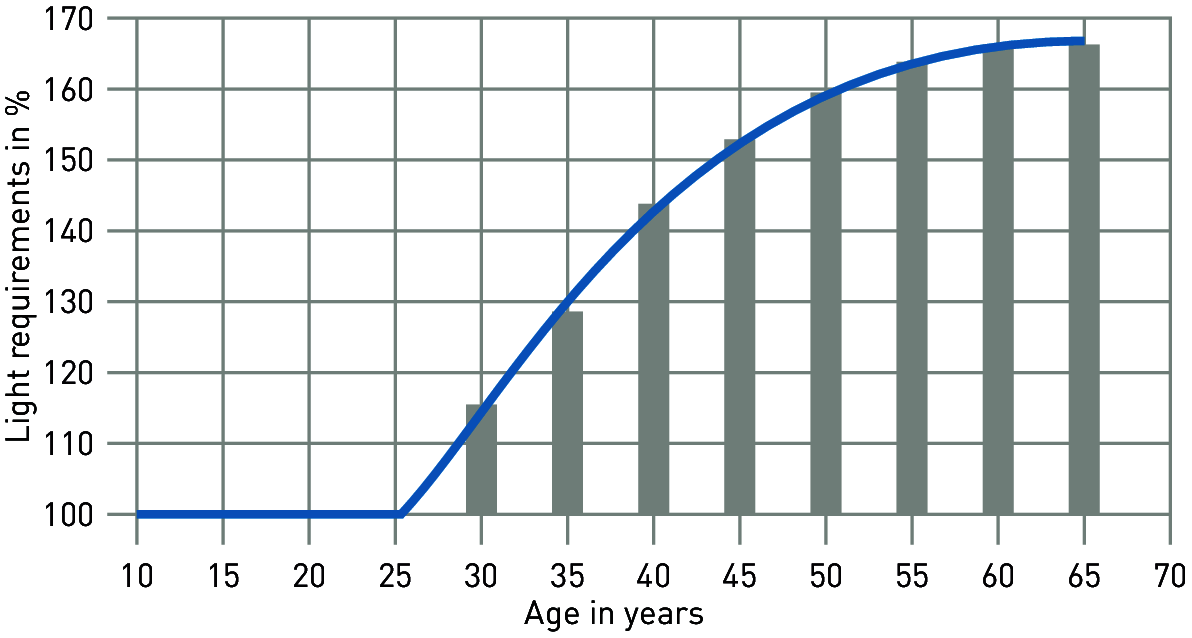Age-related visual impairments generate requirements for senior-friendly lighting. This concerns in particular
lighting level,
glare limitation,
light colour,
control of biological functions using light with an elevated blue component as well as
limitation of differences in brightness.
